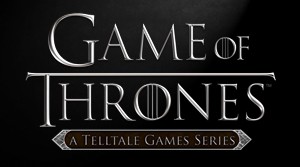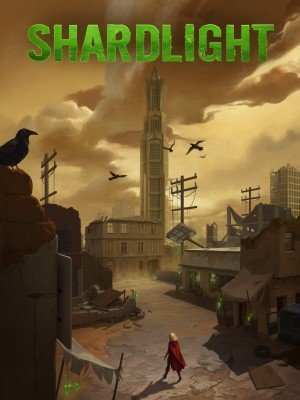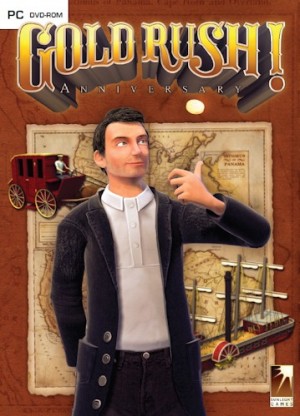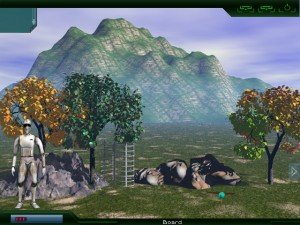AdventureX 2015: Part 2 - The People page 2
Events Coverage
Reporting from E3, GDC, AdventureX, Gamescom and other gaming events around the world

In part one of our coverage, I focussed on the games of AdventureX, but once again there was an impressive array of speakers comprising a broad range of talents and experience. Though there weren’t enough hours in the day to see and hear everything I’d have liked, here are my personal highlights among this year’s presentations.
Dave Gilbert – Engineering Empathy: Getting the Player to Care
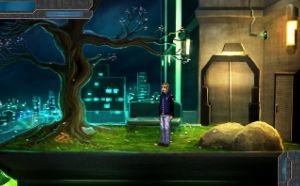 |
Technobabylon
|
Technobabylon was originally an episodic freeware series by James Dearden before being picked up, polished, and published commercially by Dave Gilbert’s Wadjet Eye Games last year. Those who had played the original episodes would find various changes had been made in the final version. One of these was the deletion of the opening scene of the second episode. In this segment, one of the main protagonists, Dr Regis of the police department, has gone to visit a tree he planted in memory of his wife. Here he found a young woman intending to commit suicide, and the opening actions of the game were saving this woman’s life. For Dave, this scene fell flat for one simple reason. Meeting both of these characters for the first time, players had no emotional investment in either. Dave described this sort of scene as “having your dinner”. He coined this term based on a scene from the television series Breaking Bad. The scene in question involved three of the main characters simply having a surprisingly tense dinner together. On its own the scene appears mundane with run-of-the-mill dialogue. But with the sequence appearing in the show’s fifth season, viewers were well aware of the relationships involved, and understood why this ordinary event was so difficult for all.
Dave expressed his belief that such scenes can have a powerful effect, but only if placed correctly. Too early and the lack of investment robs it of power. Too late and it feels like you are padding out the story to add artificial value through extended play time. In the case of Technobabylon, Dave felt the scene clearly fell into the former category, and the entire sequence was replaced. In its place was a scene where Dr Regis was introduced on the job, with he and his partner Dr Lao attending a call-out. This not only served to introduce the characters, but also allowed the inclusion of background material for the setting and part of a sub-plot. Of course, the situation is different when, like Breaking Bad on television, you have previous episodes behind you. When writing Blackwell Epiphany, Dave felt comfortable assuming that the audience had played the earlier games in the series. As a result, an investment in the lead characters could be taken for granted, allowing more emotional scenes early on.
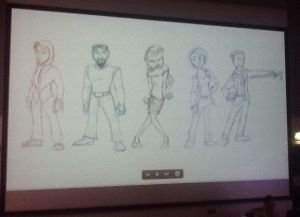 |
Concept art from upcoming Wadjet Eye fantasy game |
To finish his talk, Dave spoke about a new game that is in the early stages of development, set in a world of magic. In this there will be five available characters, with the player choosing two to use. As this option will result in a range of combinations, Dave has been engaged in small writing exercises of dialogue between each pair. For one pair he showed an early draft of dialogue in which the two characters sniped at one another over one of them tapping his staff. But he felt that this snarkiness did not provide any real characterisation and cast doubt on them working as partners. The second draft had the tapping being an unconscious act that the other character points out. Whilst not a huge shift, the revised dialogue makes them feel more like colleagues, and allows introduction of the concept that magic can subtly affect its users without them knowing.
To keep track of Dave’s existing games and future projects, check out the Wadjet Eye Games website.
Steve Ince – Emotions and Character in Games
Having work in the industry for over 20 years, Steve Ince is a man with a lot of experience. His first role included animating background sprites for Revolution Software’s Beneath a Steel Sky. If you remember the steam blowing out of a pipe near the start, that was one of his. His first writing job was for the British company’s later spy thriller In Cold Blood. He is still proud to have been part of that game, and feels it has a depth to it which he tried to bring to his subsequent projects. Steve believes good narrative can add depth to a game, but not all games need narrative in the same way. If you are playing Pac-Man, you don’t need to know his life story. Even in more story-based games, the narrative needs will be very different. In contrasting two very different styles, Steve picked out Dishonored and Thomas was Alone. The first was from an established genre, whilst the latter was unlike anything that had come before.
 |
Steve Ince |
For the player to really get into the story, an emotional investment is usually necessary. Steve expressed the opinion that well-rounded characters are the main way to unlock player emotions. If you create realistic characters that the player cares about, they will be more invested in their fates. However, there are other ways of arousing emotions, and those may differ depending on your audience. In a children’s game Steve is currently developing, bright colours and cheery cartoon characters may prove enough. For the more mature gamer, unexpected events may trigger an emotional response. One such event was the death of Aeris in Final Fantasy VII. Many players were surprised and upset by her sudden demise, but also found it jarring in a universe where resurrection during fights was commonplace.
For characters to come alive, they must be more than just statistics and abilities. Characters must be people to be believable, even if they are not even human. Sometimes this means having a story that goes beyond the game. Citing Brian McDonald’s writing guide Invisible Ink, Steve advocated writing more background to a character than is actually shown within the story itself. The super spy will need stealth and assassination skills, but they might also like fishing and grow hydrangeas. With games, where the player influences the story through interaction, things sometimes have to be done differently from more passive media like film. Get the characters right and writing dialogue for them becomes easier, as you start to know how the character thinks. If your game is to have voice acting, then it also needs to sound right spoken aloud as well. The voice work will have to carry most of the emotion, as even current technology limits the visual cues available. To a certain extent this will be outside the control of any writer. Good actors and voice directors, as well as a good recording studio, will make a huge difference to how dialogue comes across.
To finish off, Steve recommended trying out the relatively new semi-interactive video Try Life, which lets you give limited direction to a live-action story. If you also want to follow the man himself, you should check out Steve’s own website.
The Slaughter and One-Man Development
The Slaughter has been displayed at AdventureX before. In a talk he gave this year, solo developer Alex Francois gave some background to the ongoing project, and the trials of being a one-man studio.
 |
The Slaughter's Alex Francois |
The game’s story involves a Victorian era detective, down on his luck and falling into alcoholism. A lucrative case falls into his lap, but he may find he has bitten off more than he can chew. Production has advanced and improved considerably since the early version I saw a few years ago. Whilst still done in early ‘90s-style pixel art, the graphics are much more detailed than before, with full dynamic lighting effects as well. I also got to see one of the lead character’s alcohol-induced dream sequences, which had a misty, surreal quality to it. The highlight for me was the shove-ha’penny minigame that had been added. In this traditional pub game, players take turns sliding pennies across a board, the object being to get them to stop between marked lines. The use of physics was impressively realistic, and winning the game was immensely satisfying. A vital inventory item is the reward for success, though I was reassured that repeated failure will provide an alternate way of acquiring it if necessary.
Whilst enjoying the freedom being his own boss allows, Alex talked about the struggles sometimes to motivate himself. In this his Kickstarter backers have proven a help, pestering him for updates on the project when he might otherwise fail to move things along on his own. At the same time he has also realised that, while he originally felt it to be a form of goofing off, research is actually work. He no longer feels guilty about taking time to search out accurate details, and this has certainly paid dividends. The Victorian feel of the game would be a lot poorer if he had not done the research he has on the period. The freedom to put whatever he wants to into the game has also proved a two-edged sword. On the one hand it has allowed Alex to make a game that includes the things he most enjoys. At the same time, having to do all the art and programming for each new idea means that any addition increases the development time. The original plan was to release the game in its entirety, but switching to an episodic format soon seemed the obvious choice. The final number of episodes is still not firmly fixed, but is likely to be three.
The first episode of The Slaughter is projected to be out early this year. To follow its ongoing progress, check out the developer’s blog.
Ian Thomas – Lessons Learned From LARP
Ian Thomas has worked on a number of games, including Frictional Games’ SOMA and the Lego Star Wars series. Whilst he has been involved in the mechanics of these games, his main skill is writing and narrative design. He has applied this skill to other fields as well, including a children’s book about Cthulhu, but his talk focussed on the writing he has done for LARPing (live-action roleplaying) events. For many people this conjures up images of sword and sorcery epics with rubber swords, but the genre goes far beyond that. To illustrate this, Ian talked about a supernatural mystery weekend in which he had been involved.
 |
Ian Thomas
|
The story was set in the 1950s and took place at a remote manor house in Exmoor. The two-day event was a supernatural tale, with many ghosts putting in an appearance. Whilst each character started off with their own personal goals, finding the reasons for the hauntings and putting the varied spirits to rest were the main game objectives. Some games would have bombarded participants with reams of detail about the setting and rules to memorise. Ian and his team preferred a more immersive approach. Whilst some practical issues had to be covered by a short rules sheet for the safety of players, the character and setting information was largely supplied differently. Each player received their own sheaf of documents for their assigned character, including newspaper clippings, letters and photographs. These not only brought the characters to life as game world items, but they could be carried around and referred to without breaking immersion. Many players also had blackmail material on others in their bundles, giving them hooks for interaction once on site. One player was also provided a camera – actually a camera phone sealed in an era-appropriate case. The setting had a darkroom this player could take the camera to, where the on-site staff would “develop” and return prints of the pictures. Of course, as these were actually being produced on computer, a little bit of discreet Photoshopping allowed the addition of apparitions to the final pictures.
Getting all the players to feel like their characters was only one aspect. There also had to be strange events to pique their interest and give them things to investigate. As players obviously have free will, such events sometimes had to be constructed in ways that would prevent them from interfering. In one scene, played out in the early hours of the morning, players heard an argument followed by a gunshot. After this a woman brandishing a gun and carrying a baby ran into a first floor room where some of the players were. She moved towards the window, threw the “baby” out and then jumped after it herself. Anyone following would look down from the window to see nothing there. Of course, the woman was a stuntperson, falling onto a pile of boxes that were then swiftly carried out of view. But this would only work if none of the players prevented the woman from jumping in the first place. Two major factors influenced this. One was a simple physical barrier, a cot secured to the floor a little way from the window. Anyone seeing the woman going to jump would have to go around, losing precious time. The other was a mental one, the aforementioned gun. Being immersed in the scenario, the fact that the gun was fake would not immediately occur to players, preventing them from taking action until it was too late. Having decided on these factors to make the stunt work, the two items were then woven into the backstory of the ghost themselves.
This is just a taster of how the story was woven together. To get more detail on this event, and find out more about the group that makes them, have a look at the event website.
Alasdair’s Adventure Quiz
With his comic pirate adventure game Nelly Cootalot: The Fowl Fleet nearing publication, you wouldn’t think Alasdair Beckett-King would have time for anything else. Fortunately for us, he was still able to put together a fun quiz of obscure adventuring knowledge. Last year I led Team Hawaiian Shirt to a crushing defeat against the mighty forces of Team Green Pants. Of course, that defeat was clearly not down to my own lack of ability, but rather to facing the astonishing knowledge of Francisco Gonzalez. Having noted this, Alasdair decided to split us into three teams this year. Two teams were based on Nelly Cootalot characters, Nelly herself and the villainous Baron Widebeard. The third consisted solely of Francisco himself. As an ordinary member of Team Widebeard, I feared another defeat could be on its way.
With no captains this time around, the floor was open to anyone to provide answers. To prevent everyone just yelling answers over one another, players had to shout “BUZZ” and be acknowledged by Nelly’s real-world alter ego, Rachel Smith. The quiz rounds included returning favourites from last year, like the odd-one-out round where voice-acting knowledge came in handy. There were also new rounds, such as the lightning round, where we had to identify the lightning flashes from various games. I cursed when I was too slow to get a freeware game in this round. One particularly hilarious round was based on box art. Box art was displayed with the title digitally removed, and it soon became clear that many box designers had not played the game involved. That is unless anyone remembers a barbarian fighting an orc scene from Zork. To finish off, there was a special round constructed to trip up the player who had done so well last year. In the Francisco Gonzalez round, each team was asked questions in turn. Teams Nelly and Widebeard were tasked to name obscure celebrities from brief descriptions, the answer coincidentally turning out to be “Francisco Gonzalez” each time. Meanwhile, poor Francisco’s questions involved knowing facts about other people named Francisco Gonzalez instead, with the obscure nature of their “celebrity” stumping him. His final question was about a detail from a 2004 game from his own Ben Jordan series. After a brief struggle he managed to get a final point with the right answer.
In the end, Team Widebeard stood triumphant! But it wasn’t so much about the winning (though did I mention I was on the winning team?) but more about having a bit of anarchic fun. Those wishing to see if that same sense of humour and fun translates into Alasdair’s rapidly upcoming game should check out the Nelly Cootalot website.
SkyGoblin – Ups and Downs of Being Indie
I could tell you all about SkyGoblin’s experience of bringing The Journey Down to life, which was shared in a fun video presentation to kick off the whole AdventureX event, or I could just let you see it for yourselves.
Conclusion
So that was AdventureX for another year. Once again there wasn’t enough time to see all the games or talks available, but great fun was had by all and it was a pleasure to meet so many enthusiastic adventure gamers. There was even time to fit in a little AdventureX song. The convention keeps on going from strength to strength, with the new venue proving very pleasant. I look forward to more adventuring antics in 2016.






